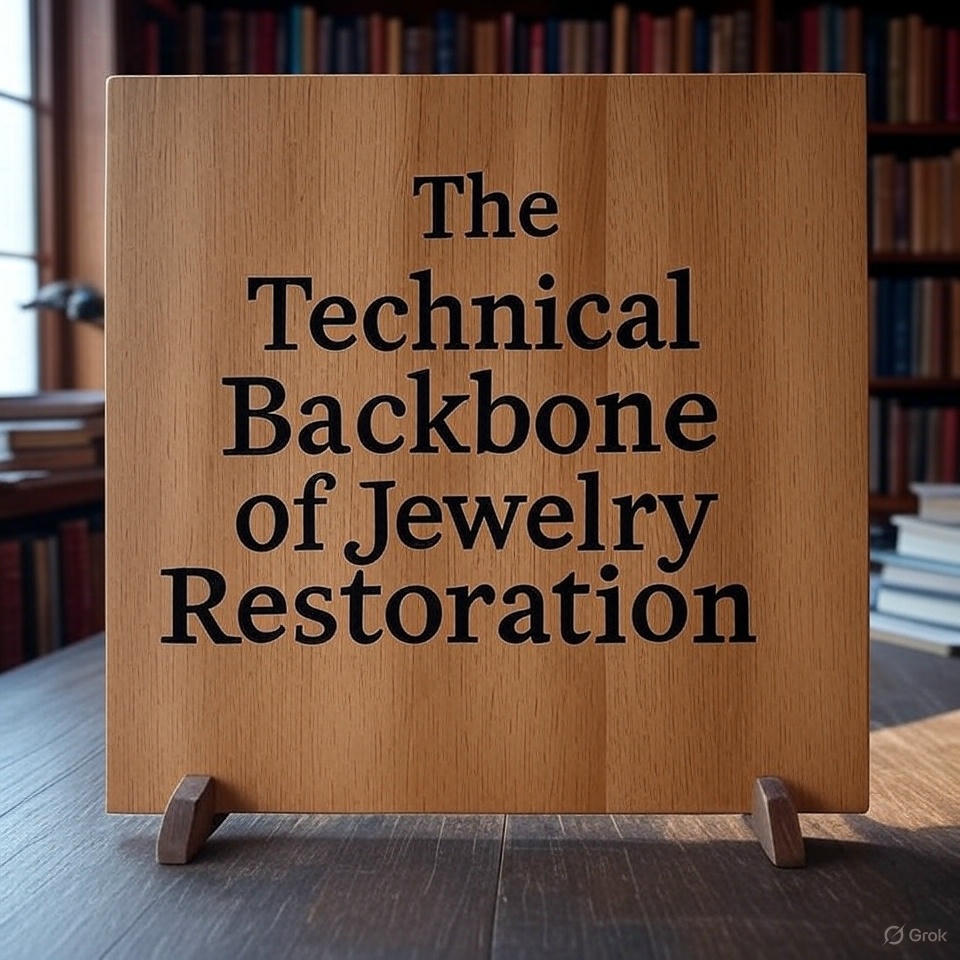When most people hear the term jewelry repair, they picture someone adjusting a loose clasp or polishing a scratched gemstone. But beneath the surface lies a technical world powered by machines, microscopes, and skills that rival those used in industries like aerospace, watchmaking, and micro-instrument fabrication.
Jewelry repair today isn’t just about beauty — it’s about precision engineering, material science, and tool-assisted craftsmanship. From micro-welding a cracked setting to ultrasonic cleaning that operates at frequencies the human ear can’t detect, the repair bench mirrors a miniature tech lab.
Precision Over Perception: Understanding the Craft Behind the Shine
Jewelry Repair: A Practice Rooted in Exactitude
Rather than just cosmetic touch-ups, modern jewelry restoration involves sub-millimeter accuracy and an understanding of how different metals and stones behave under stress. Technicians often address fractures invisible to the naked eye, correct alignment issues, and reinforce weakened joints — all while preserving the original design.
Just like micro-device engineers, professional jewelers use tools calibrated for tasks requiring exact dimensions and stable control. It’s a high-skill trade that bridges artistry with technical execution.
Tools of the Trade: Industrial Tech Meets Personal Adornment
The Role of Laser Welders in Jewelry Repair
One of the biggest breakthroughs in jewelry repair technology has been the laser welder. Laser welders utilize energy precisely, as contrasted to conventional soldering, which transfers heat across the object. That means jewelers can fix a cracked shank or re-tip prongs without removing gemstones or risking heat damage.
Laser welders allow for:
- Microscopic fusion of metals
- Repairs on plated and hollow jewelry
- Cleaner seams and stronger joints
These machines are inspired by medical devices and aerospace tech, delivering beam widths smaller than a human hair. It’s no exaggeration to say jewelers are operating on the nanoscopic scale.
Ultrasonic Cleaners: The Vibration Scientists
Once repairs are done, most pieces go through an ultrasonic cleaner — a device that uses high-frequency sound waves to agitate a liquid cleaning solution. This process shakes loose dirt and grime that hand cleaning can’t reach.
Advanced Vision: How Magnification Tools Enable Micro-Level Accuracy
Bench Scopes and Headband Magnifiers: Essential for Detail Work
Repairing fine jewelry requires a level of vision far beyond human capability. Jewelers often wear head-mounted magnifiers or work under bench microscopes, ensuring every weld, stone alignment, and surface adjustment is perfect.
These tools allow for:
- Accurate inspection of micro-cracks or flaws
- Alignment of components in tight, delicate spaces
- Enhanced control during soldering or prong setting
Drawing Parallels with Horology and Microelectronics
Much like a watchmaker piecing together a chronograph or a technician assembling a microchip, jewelers rely on optical enhancement to navigate tiny components and ensure flawless outcomes.
Materials Matter: A Scientific Approach to Metal and Stone Behavior
Working with Diverse Alloys and Their Properties
Each type of metal reacts uniquely to heat and pressure. For instance,
- Platinum is denser, harder to manipulate, but ideal for secure settings.
- Titanium requires special tools and controlled environments due to its rigidity.
Understanding these variables is essential to ensure the repair doesn’t weaken the material or change the item’s balance. This level of metal knowledge mirrors disciplines like precision machining and tool calibration.
Gemstones and Sensitivity to Temperature and Pressure
Jewelry isn’t just about metal — it includes a wide range of natural and lab-grown stones. Certain gems are extremely sensitive:
- Opals can crack due to their water content.
- Emeralds may contain internal flaws that fracture under heat.
- Diamonds, although hard, may still be vulnerable during improper repairs.
Conclusion: A Technical Profession Hidden in Plain Sight
Jewelry repair is not simply a matter of polishing or replacing — it’s a process driven by technical knowledge, advanced equipment, and industrial discipline. Every adjustment is informed by material properties, physical constraints, and optical precision.
Far from being just a creative trade, it demands the same level of care and accuracy found in aerospace engineering, watchmaking, and scientific instrumentation. Whether it’s restoring a worn heirloom or fixing a cracked band, jewelry repair specialists are quietly operating as micro-engineers of elegance.
Next time you hand over a piece for repair, remember: you’re not just paying for beauty — you’re investing in precision and technical mastery.
Frequently Asked Questions
1. What makes modern jewelry repair different from traditional methods?
Today’s repair methods use laser welding, ultrasonic cleaning, and digital modeling, allowing for more precise, damage-free adjustments compared to older, heat-based techniques.
2. Are all stones safe during the repair process?
Not all. Fragile stones like emeralds and opals require extra care. Professionals often remove or shield them before work to avoid damage from heat or pressure.
3. How do jewelers match old finishes on vintage pieces?
They use a mix of custom alloy blending, manual polishing, and sometimes electroplating to mimic original textures and colors without compromising durability.
4. Can damaged rings or necklaces always be repaired?
Not always. If the metal is too fatigued or fractured in critical areas, a complete rebuild might be necessary. Skilled technicians assess each item before recommending repair or replacement.






